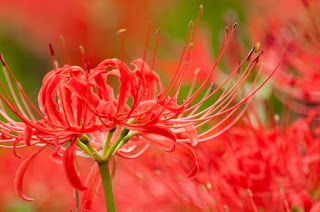Today I would like to introduce you to some of Japan's famous autumn grasses and flowers.
Everyone, regardless of gender or generation, knows these names and they are often used in conversation.
When you think of autumn flowers in Japan, this is probably the flower that immediately comes to mind. In kanji, it is written "秋 autumn 桜cherry blossom."
Cosmos fields with many cosmos plants are located in many places in Japan, and many people go to see them.
When I think of cosmos, the song "Cosmos" comes to mind; it is quite an old song, released in 1977, but the lyrics and melody are so good that it is still a famous song.
This is a song about a daughter's feelings for her mother before her wedding.
Many of the songs written by Masashi Sada are heart-wrenching like this.
I'd love for you to taste the lyrics.
But I couldn't find the lyrics in English. I'm sorry.
Unlike today's trends, in the 70's this kind of storytelling and slow folk song was popular.
Many of the songs may be easy for Japanese beginners to sing.
The language of flowers is "noble," "honorable," and "lofty. This flower, which is also used as the emblem of the Emperor, has been around in Japan for a long time.
Reference:
お役立ち!季節の耳寄り情報
Chrysanthemums are also often used as offerings for graves because of their long-lasting nature, and many Japanese may associate chrysanthemums with graves.
Chrysanthemums are also used in the flowers introduced in the Obon article in this blog.
The Japanese Susuki is an indispensable part of the Japanese autumn landscape.
There is an autumn event in Japan called "Otsukimi," a day to watch the moon, and Susuki is also used on that day.
Cedar pollen in spring and ragweed pollen in autumn are my natural enemies. I am allergic to these pollens, so I always wear a mask during the pollen season.
I get itchy just by looking at it.
There are a lot of ragweed pollen growing near rivers.
Because ragweed pollen is so small, it can penetrate deep into the body and enter the bronchial tubes.
Once in the bronchial tubes, ragweed pollen irritates the mucous membranes of the throat, causing coughing and other symptoms.
Reference:ヨーグレナ
The flowers are so beautifully colored that I want to pick them and decorate my house with them. However, the roots of this flower are poisonous.
It is often planted in rice paddies and tomb to protect them from rats and moles.
There is a legend about this flower to prevent children from bringing it home.
"If you bring higanbana home, there will be a fire."
With such scary superstitions, it is strange that even this beautiful red color seems to be eerie somehow.






Comments
Post a Comment